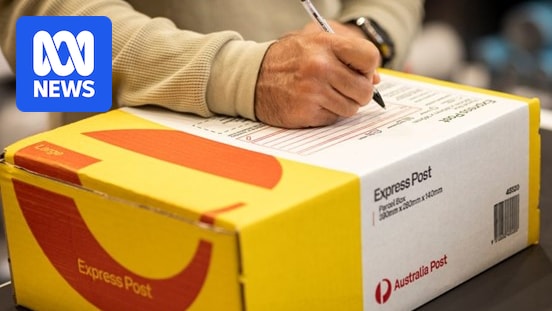
Australia Post’s chief executive, Paul Graham, has defended the postal carrier’s abrupt decision to halt most shipments to the United States, just days before new tariffs on low-value packages were set to take effect. The announcement, made via email to business customers early Tuesday morning, caught many by surprise, including Sydney-based Mediband, which exports medical alert bracelets to the US.
Mediband’s managing director, Michael Randall, expressed frustration over the lack of prior warning, stating, “We got a letter at 7am in the morning notifying us that we could no longer ship. We didn’t get any notice whatsoever.” Despite the backlash, Graham insisted that Australia Post had previously alerted customers to potential disruptions.
Understanding the Tariff Changes
The suspension of US shipments by Australia Post follows the US government’s decision to end the “de minimis” exemption, which previously allowed parcels valued under $US800 ($1,230) to enter the country tax-free. This exemption was crucial for many Australian retailers who relied on it to send goods to the US without incurring additional costs.
Originally set to expire in 2027, the deadline was unexpectedly moved up to August 29, 2025, aligning with similar changes that had already impacted shipments from China. This sudden shift left many global postal services, including Australia Post, scrambling to adapt.
“Until such time as the actual decision was going to be enforced, we ran the risk of actually going early and then the US government changing its mind again, which it has done before,” Graham explained. “We couldn’t give [our customers] concrete advice.”
Challenges and Solutions
Australia Post is not alone in halting US shipments; other global postal services have also paused operations due to the lack of systems to manage the new tax requirements. While Australia Post’s commercial division is equipped to handle these logistics, the cost is significantly higher for customers.
Graham assured that efforts are underway to resume US shipping “within weeks, not months,” emphasizing the urgency with which Australia Post is working to implement a viable solution. “We’re working night and day to implement this new solution,” he stated.
Private Sector Competition
Meanwhile, private shipping companies continue to operate in the US market, having already adapted to the new tariff landscape. This poses a significant challenge for Australia Post, which is facing increased competition and pressure to maintain its market share.
Australia Post’s latest financial results, released on the same day as the shipping announcement, revealed a modest profit of $18.8 million for the 2024-25 fiscal year. This marks a significant turnaround from the previous year’s $88.5 million loss, driven by a 4.3% growth in its parcel business.
The results also highlighted a $230 million loss in the letters and documents segment, underscoring the “intensifying structural headwinds” facing the postal service amid fierce competition from private couriers.
Future Outlook and Strategic Adjustments
Australia Post’s mandate to deliver letters and serve regional and remote areas remains a legal obligation. However, Graham acknowledged that further reductions in letter services are likely, with deliveries to households now occurring every second day.
“The average household receives between one and two letters a week and sends between five and eight a year,” Graham noted. “We’ve seen other jurisdictions around the world, other postal operators, who have gone to one day or two days a week. We are not at that stage yet.”
Looking ahead, Graham emphasized the importance of strategic adjustments to avoid the financial pitfalls experienced by postal services in other countries, many of which have required government bailouts. “We don’t believe that we need [a bailout],” he affirmed, highlighting the organization’s focus on strengthening its balance sheet.
The current situation presents both challenges and opportunities for Australia Post as it navigates the complexities of international shipping and domestic service obligations. As the postal service works to implement new systems and strategies, the coming weeks will be crucial in determining its ability to adapt and thrive in a rapidly changing global landscape.







